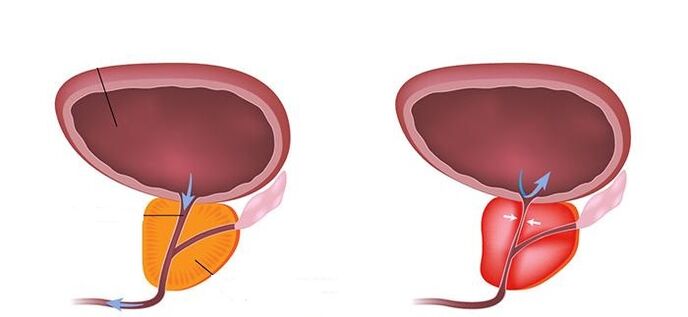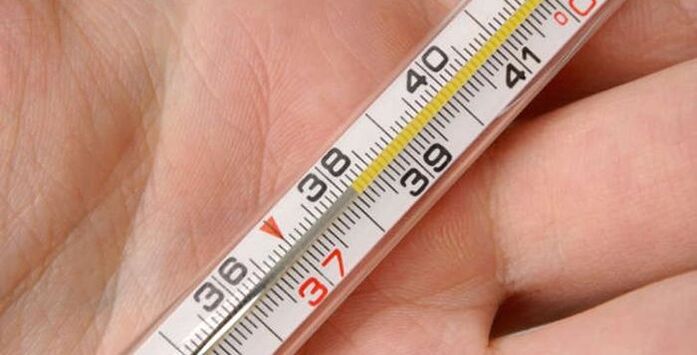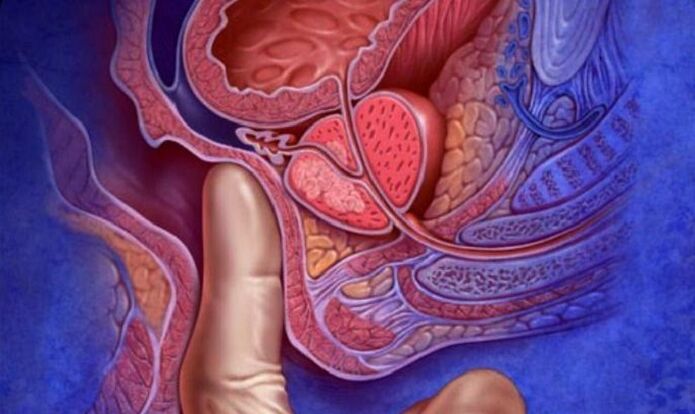According to statistics, one-third of working-age men will suffer from prostatitis at different stages of their lives. Persistent pain, impotence, infertility-in the absence of treatment, this is not a complete list of problems that threaten the patient. Due to the urgency and danger of this disease, everyone should know its symptoms and initial manifestations. In this article, you will learn about all the signs and diagnostic methods that can identify prostatitis.

Clinical situation in the early stages of development
Prostatitis is an inflammatory lesion of the male prostate. The disease is divided into the following forms: acute and chronic bacterial prostatitis, chronic pelvic pain syndrome, and asymptomatic prostatitis. Each form is expressed in different ways and has the characteristics and characteristics of the curriculum.
It is difficult to say how this disease will develop in each particular man. The appearance of certain signs depends on many external and internal factors. In order to facilitate the description of pathological features, it is customary to divide all symptoms of prostatitis into three categories: those related to urinary disorders, sexual dysfunction and mental illness. The first and most obvious symptoms of prostatitis (except asymptomatic forms) may be the following signs in men:
- Pain in the pelvis, back, and groin area.
- Pain and burning when urinating.
- Urine is difficult to pass.
- I feel that my bladder is not completely empty and I have the wrong urge to urinate.

Pain in the pelvis, back, and groin area, the feeling of incomplete bladder emptying, and the wrong urge to urinate are all signs of prostatitis.
The symptoms listed are caused by impaired urinary function, which is due to the anatomical features of the structure and location of the bladder and prostate. Signs of prostatitis related to sexual dysfunction are also obvious. Men most often complain about the following:
- The erection is weak.
- Ejaculation occurs rapidly during sexual intercourse.
- Lack of orgasm or decreased sensitivity.
- Urethra and rectum are sore during ejaculation.
The urination problem and the difficulty of close life caused by prostatitis greatly troubled this person. Patients with prostatitis are forced to change their lifestyles, deny their habits, and family relationships become more complicated. Obsession with problems can cause nervousness, anxiety, and decreased libido. This can be called an indirect symptom of prostatitis, which belongs to the third group (mental disorder) of the above symptoms.

Prostatitis in men can often be confused with prostate adenoma or cancer (a pathology of the bladder). All these diseases look similar, especially in the early stages. It is difficult for unprepared people to distinguish them, so the differential diagnosis is made by analyzing all existing objective symptoms, laboratory and instrument research data. Since each form of prostatitis has its own specific signs and characteristics, caution should be considered separately.
Characteristics of certain forms of disease
Acute prostatitis is male prostatitis caused by the infiltration of infectious substances into the organs through the blood, lymph or urethra. The disease begins suddenly and is characterized by the severity of all clinical symptoms. The main symptoms of acute prostatitis:
- Body temperature rose to 39-40 degrees.
- Symptoms of general poisoning (headache, weakness, fatigue, decreased performance, etc. ).
- Severe pain in the perineum and bone above the pubic joint of a person.
- Frequent urination, painful.
- Sometimes men have urine retention.

A temperature of 39-40 is a clear sign of prostatitis.
Usually, acute inflammation of the prostate ends with the recovery or synchronization of the process (symptoms may be troublesome for several months). But this form of prostatitis is usually the main cause and is caused by bad habits (alcoholism, smoking, etc. ), sedentary lifestyle, lack of vitamins and minerals, excessive sexual abstinence, or improper periods. -Aggressively spread infection or ingest normal flora. The clinical manifestations of chronic prostatitis are more insignificant than the acute form, and the symptoms of the disease are inconsistent, which greatly increases the difficulty of diagnosis. For chronic forms of prostatitis, the most typical symptoms are as follows:
- Including the night, increased the urge to urinate.
- Soreness when passing urine and ejaculation.
- There is a dull pain in the lower back, pelvis, and upper chest.
Chronic Pelvic Pain Syndrome (CPPS) in men combines recurrent soreness in the prostate area, temporary diseases of the urinary system and reproductive system. CPPS is a broader concept in medicine, because in terms of etiology, pathology may be based on tumors or ischemic processes, neurological diseases, and not just inflammation. The inconsistency of signs of prostatitis in chronic pelvic pain syndrome significantly complicates the diagnosis, but it is much more difficult to diagnose in an asymptomatic form. In these cases, the data of laboratory and instrumental research methods play a major and decisive role.
Diagnostic technology
Based on the symptoms of prostatitis alone, a definite diagnosis cannot be made. In addition, doctors must collect medical records: clarification of information about the time of symptom onset, its connection with major and major events in life, physical and mental shock, and all possible predisposing factors. Physiological examination is always performed-a digital rectal examination is performed at the knee and elbow of a patient, with the patient lying on his side, bending or standing on the leg, and the body bent forward. In this study, you can find the characteristic signs of prostatitis (not all need to be present):
- The size of male gonads increases.
- The shape of the organ is correct or flat with depressions.
- Uniform or dense dough.
- Smoothness of the prostate border.
- Stress can increase soreness.

Further examination of patients with symptoms of prostatitis can be supplemented by laboratory methods. Regular and biochemical blood tests are required-there are no specific changes in indicators, only indirect signs can determine whether there is an inflammatory process in the body (white blood cells, the increase in the number of acute-phase proteins, and accelerated ESR). The results of the urine test will be valuable, which will make it possible to determine the existence of the infection process in the reproductive tract, and will help identify the pathogen for etiological treatment. In addition, urologists can prescribe methods for analyzing prostate secretions and sperm charts.
Among the tools and methods for diagnosing prostate diseases, the most useful is TRUS-transrectal ultrasound. In this case, a special sensor is used and the doctor will insert it into the rectum. This will make the patient feel uncomfortable, but it can be compensated by the information content of this method. With the help of TRUS, it is possible to assess the structure of organs, determine the presence of tissue inflammation, the degree of narrowing of the urinary tract, and rule out the presence of stones. The main echogenic signs of prostatitis: increased organ size, edema, fibrosis, changes in sclerotic tissue, coarse particles and heterogeneous structures.
In addition, patients with symptoms of prostatitis receive urinary flow measurement-a special diagnostic procedure that can measure the urination rate of men. Based on the data of this study, conclusions can be drawn about the degree of urethral narrowing and detrusor activity. Urine flow rate measurement should not replace TRUS, but should confirm its findings and the signs of existing prostatitis.
If you are a man, you can expand the diagnostic test plan for prostatitis. In order to clarify the relevant diagnosis, cystoscopy and pelvic CT scan of the various points. In cases where it is not clear, a biopsy is performed to distinguish the tumor process.
What to do when the first symptoms appear
The biggest and most common mistake many men make when they show signs and symptoms of prostatitis is to wait. Every patient hopes that this unpleasant symptom is temporary and will disappear soon. Untreated prostatitis is harmful to health and can cause irreversible changes in the body, which are full of impaired erection mechanisms, infertility, and even worsening-the process is malignant (conversion to cancer).
In order to prevent serious complications, everyone should consult a urologist when prostatitis first appears, and the urologist will prescribe the patient. First of all, men were given positive therapy-anti-inflammatory drugs, antibiotics, and measures to strengthen the immune system. There is no need for surgery if there are no complications. Men who suffered from prostatitis in the past are at risk and have a high possibility of recurrence. Therefore, after recovery, prevention has a great effect.



























